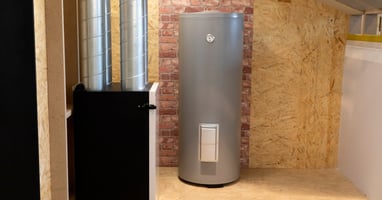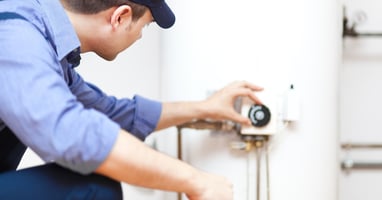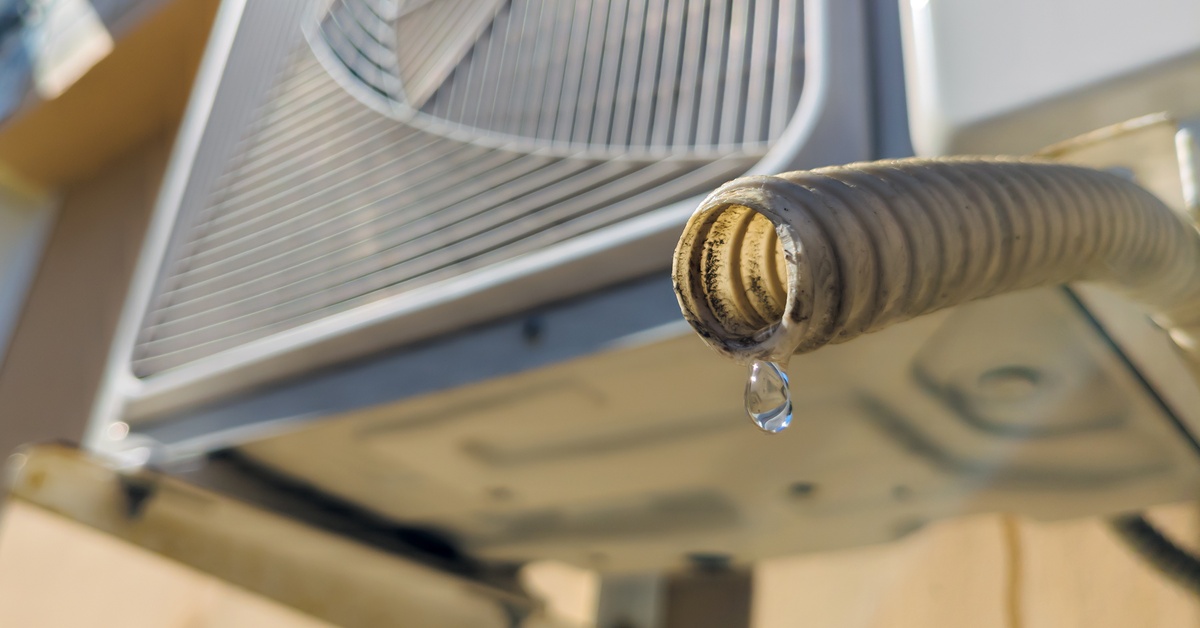Water heaters are essential appliances in homes. Whether you want to take a hot shower, wash...
The Best Temperature Settings for Your Water Heater

Have you ever stepped into a shower expecting a relaxing, warm experience, only to be blasted with scalding hot water that sends you jumping backward? Or maybe you've experienced the opposite—lukewarm water that leaves you shivering. Finding the best temperature settings for your water heater can make the difference between a comfortable experience and daily frustration.
Beyond comfort, the water heater temperature you choose impacts your safety, energy bills, and even the lifespan of your water heater. Many homeowners struggle with this balance, unsure whether they should prioritize safety, efficiency, or comfort.
This guide will show you how to optimize your water heater temperature. You'll learn about the different types of water heaters common in manufactured homes, discover the ideal temperature range for most households, and get step-by-step instructions for safely making temperature adjustments.
Water Heater Types: 3 Models Your Home Might Have
Manufactured homes typically use three main types of mobile home hot water heaters, each with unique characteristics and temperature control methods. Before you consider the temperature settings, it’s helpful to understand what type of water heater you have.
1. Gas Atmospheric Vent Water Heaters
Gas atmospheric vent water heaters represent the most traditional and affordable option for manufactured housing. These units use natural circulation to draw combustion air from inside your home and vent exhaust gases through a chimney or vent pipe. They heat water by burning natural gas or propane, with a thermostat that controls when the burner kicks on.
2. Sealed Combustion Gas Water Heaters
Sealed combustion gas water heaters offer a more efficient alternative than atmospheric vent water heaters. These units draw combustion air from the outdoors and vent the exhaust outside through a sealed system. This venting design prevents backdrafting, which improves indoor air quality while also improving energy efficiency. The sealed design of combustion gas water heaters makes them particularly suitable for airtight, energy-efficient manufactured homes.
3. Upright Electric Water Heaters
Electric water heaters use electric heating elements instead of gas burners. These units typically feature two thermostats—one for the upper heating element and one for the lower element. Electric models often provide more precise temperature control than gas units, but they can be more expensive to operate.
Why Temperature Settings Matter
Safety Concerns
Water temperature directly affects the risk of scalding injuries. For instance, water heated to 140°F can cause third-degree burns in mere seconds, while water at 120°F takes minutes to cause the same injury. This difference becomes especially important if you have children or elderly family members, as their skin is more sensitive.
Energy Efficiency
To maintain higher temperatures, your water heater has to work harder, which means it will consume more energy in the process. Reducing water temperature settings can save you money on your water heating costs. Over a year, this adds up to meaningful savings on your utility bills.
Cost Savings
Lower water temperatures can reduce both energy consumption and wear on your water heater components. Your hot water heater will last longer when it doesn't have to work as hard to maintain extremely high temperatures, potentially saving you hundreds of dollars in premature replacement costs.

Recommended Temperature Settings
The 120°F Standard
Most experts recommend setting your water heater to 120°F (49°C). This temperature provides several key benefits:
- Hot enough for comfortable showers and effective dishwashing
- Cool enough to significantly reduce scalding risks for children, elderly individuals, and adults with sensitive skin
- Efficient enough to keep energy costs reasonable
- Warm enough to prevent bacterial growth in most situations
The 120°F setting strikes an excellent balance between safety, comfort, and efficiency for most homes.
When To Consider 140°F
Some situations call for higher water temperatures around 140°F:
- Dishwasher requirements: Certain dishwasher models may need 140°F water to activate their detergent properly and achieve effective cleaning. Check your dishwasher manual to determine its temperature requirements.
- Health considerations: Households with residents who have compromised immune systems or chronic respiratory conditions may benefit from higher temperatures. The extra heat may help prevent harmful bacteria like Legionella from developing in your water system.
- High demand situations: Large families or homes with multiple bathrooms running simultaneously might need higher temperatures to ensure adequate hot water supply during peak usage times.
How To Adjust Your Water Heater Temperature
Safety Precautions
Always turn off the power or gas before adjusting the temperature. Use a reliable thermometer to test water temperature at your faucets rather than relying solely on the water heater dial, which may not be perfectly accurate.
Gas Water Heater Adjustment
- Locate the temperature dial on the front of your gas water heater
- Turn off the gas supply valve as a safety precaution
- Remove the outer door and insulation if necessary to access the dial
- Turn the dial to your desired temperature setting
- Replace insulation and outer door
- Turn the gas supply back on
- Wait several hours before checking the water temperature at the faucet furthest from the water heater
Electric Water Heater Adjustment
- Turn off power to the water heater at your electrical panel
- Remove both access panels for upper and lower heating elements (if your water heater has two heating elements)
- Carefully move insulation aside to reveal the thermostats
- Use a screwdriver to adjust the thermostats to the same temperature
- Reinstall insulation and access panels
- Restore power to the unit
- Wait several hours before checking the water temperature at the faucet furthest from the water heater
Troubleshooting Common Temperature Issues
Water Is Too Hot
If your water feels uncomfortably hot even at lower settings, check for a faulty thermostat or temperature sensor. Sometimes mineral buildup around heating elements causes uneven heating and temperature spikes.
Water Is Not Hot Enough
Cool water can result from several factors. The temperature of your incoming water will impact final output. For example, colder groundwater in the winter means your heater has to work harder to reach set temperatures. Check for sediment buildup in your tank, which reduces heating efficiency. Failing heating elements in electric units or faulty gas valves can also prevent proper heating.
The distance from your water heater to the faucet also has an impact, as hot water cools as it travels through pipes. Adding insulation around water pipes can help.
Inconsistent Temperatures
Temperature fluctuations often indicate a failing thermostat or heating element. In electric units, one element may work while the other fails, creating uneven heating patterns. Replacing the heating element can solve this issue.

When To Call a Professional
Call a professional if you notice unusual noises, water leaks, or if temperature adjustments don't solve your hot water problems. Gas units with pilot light issues or electric units with frequent circuit breaker trips need professional attention from a licensed repair technician or a plumber.
Finding the Perfect Temperature Balance
Determining the best temperature settings for your water heater requires you to consider the safety, efficiency, and comfort your household needs. Most manufactured home owners find that 120°F provides the ideal combination of safety and performance, while those with special circumstances may benefit from slightly higher settings. If it’s time to replace or repair your hot water heater, Capitol Supply & Service has technicians standing by to help.



